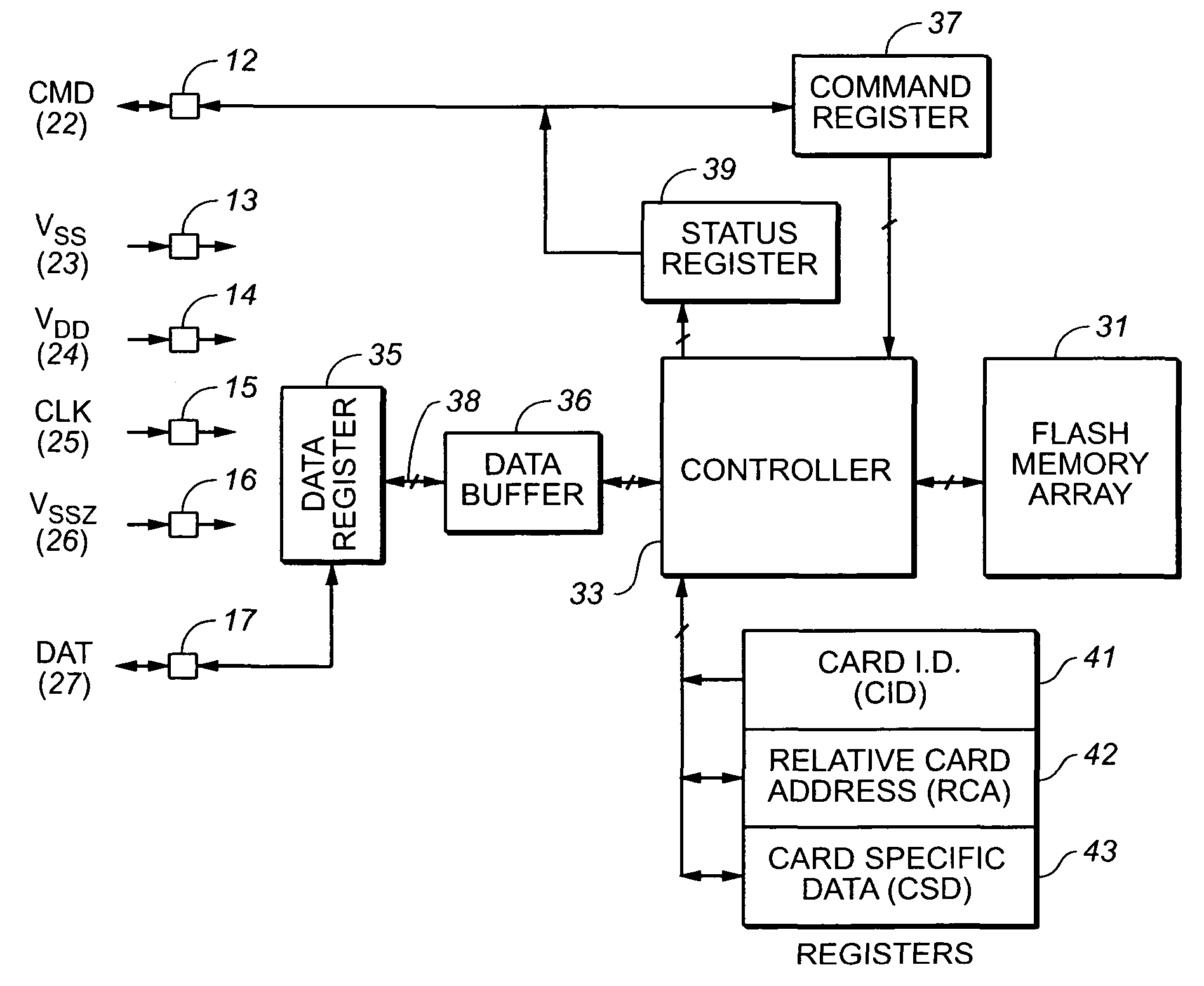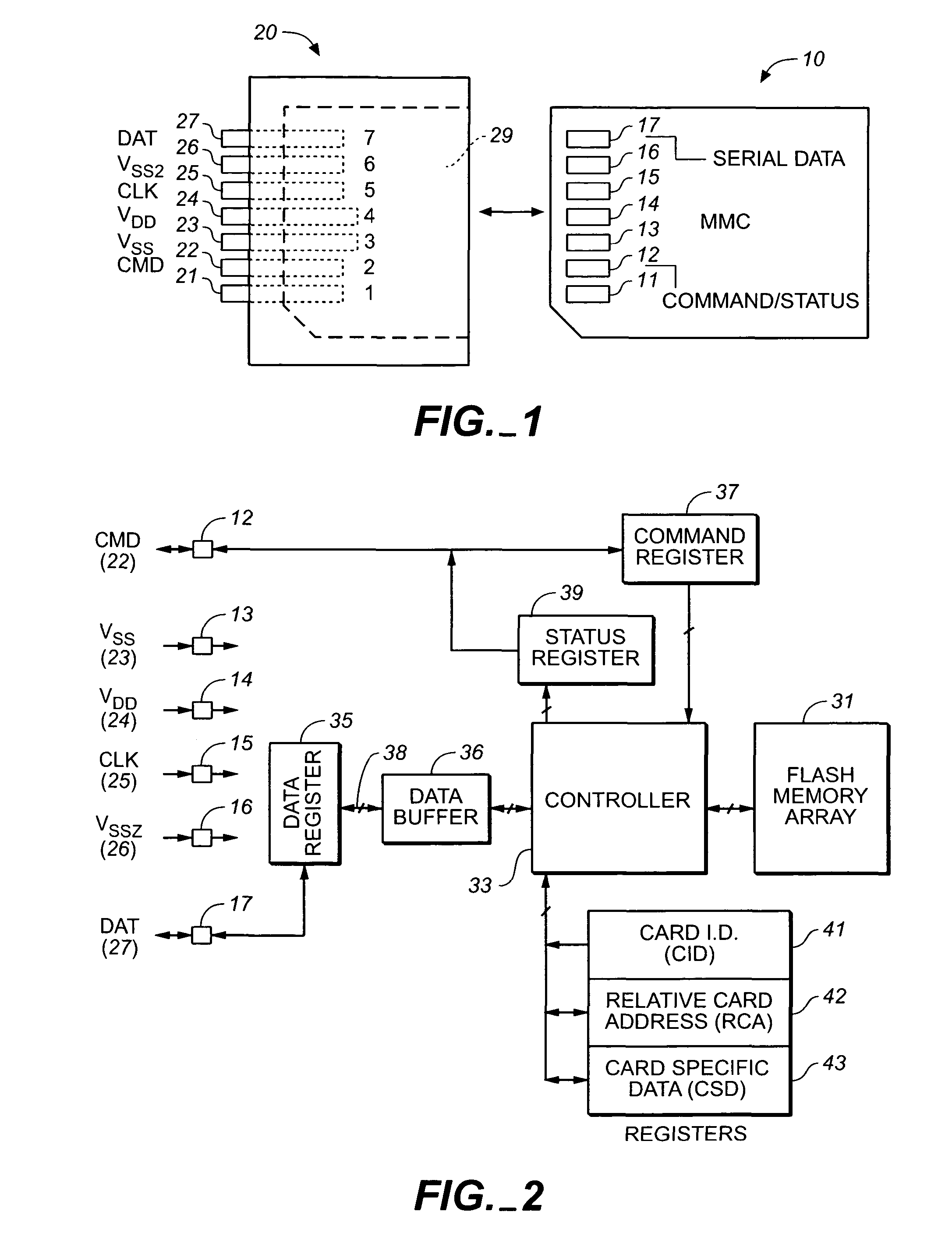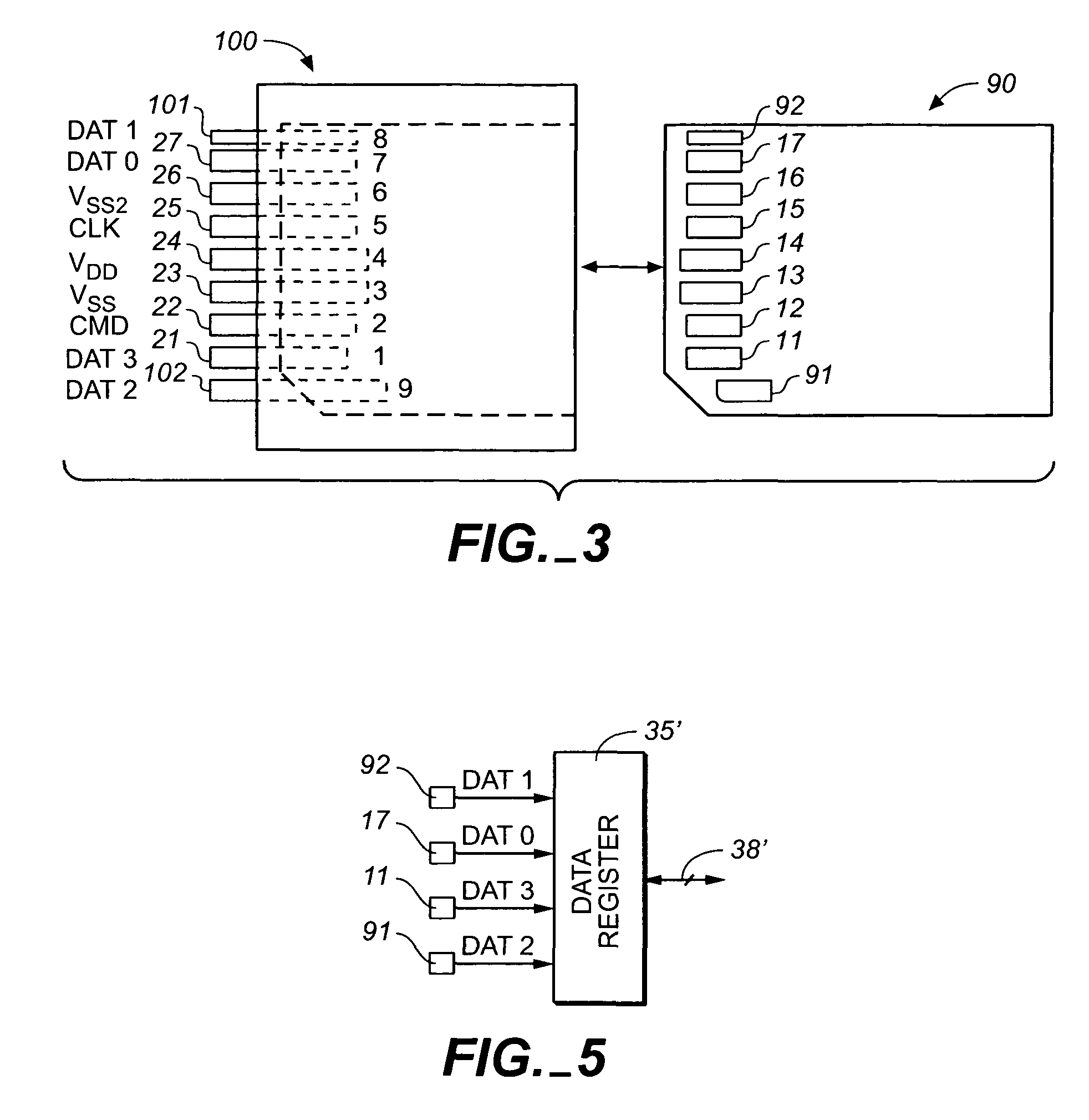Non-volatile memory system with self test capability
a non-volatile memory and self-testing technology, applied in the field of non-volatile memory systems, can solve the problems of insufficient card manufacturing, no way to figure out the problem, and data being read in an unauthorized manner, so as to speed up the debugging process and be quick and easy to tell
- Summary
- Abstract
- Description
- Claims
- Application Information
AI Technical Summary
Benefits of technology
Problems solved by technology
Method used
Image
Examples
Embodiment Construction
[0038]Before the specific embodiments of the invention are described, it is useful to first review the features of the MMC and SD cards, it being understood, however, that the invention is not restricted to applications involving the SD card. The features of the SD card are outlined in PCT application PCT / US01 / 25550, entitled “Multiple Removable Non-volatile Memory Cards Serially Communicating with a Host,” filed Aug. 14, 2000, which application is incorporated herein by reference in its entirety.
The MMC Card
[0039]With reference to FIG. 1, an existing MMC card 10 of the type described in the Background above is insertable into a slot 29 of a socket 20. The card 10 includes a row of seven electrical contacts 11-17 in a surface of the card and extending along one of its short edges. The socket 20 includes seven mating contact pins 1-7 connected to respective lines 21-27. The card contact 12 serially receives command signals from a host and serially sends a response (status signals) to...
PUM
 Login to View More
Login to View More Abstract
Description
Claims
Application Information
 Login to View More
Login to View More - R&D
- Intellectual Property
- Life Sciences
- Materials
- Tech Scout
- Unparalleled Data Quality
- Higher Quality Content
- 60% Fewer Hallucinations
Browse by: Latest US Patents, China's latest patents, Technical Efficacy Thesaurus, Application Domain, Technology Topic, Popular Technical Reports.
© 2025 PatSnap. All rights reserved.Legal|Privacy policy|Modern Slavery Act Transparency Statement|Sitemap|About US| Contact US: help@patsnap.com



